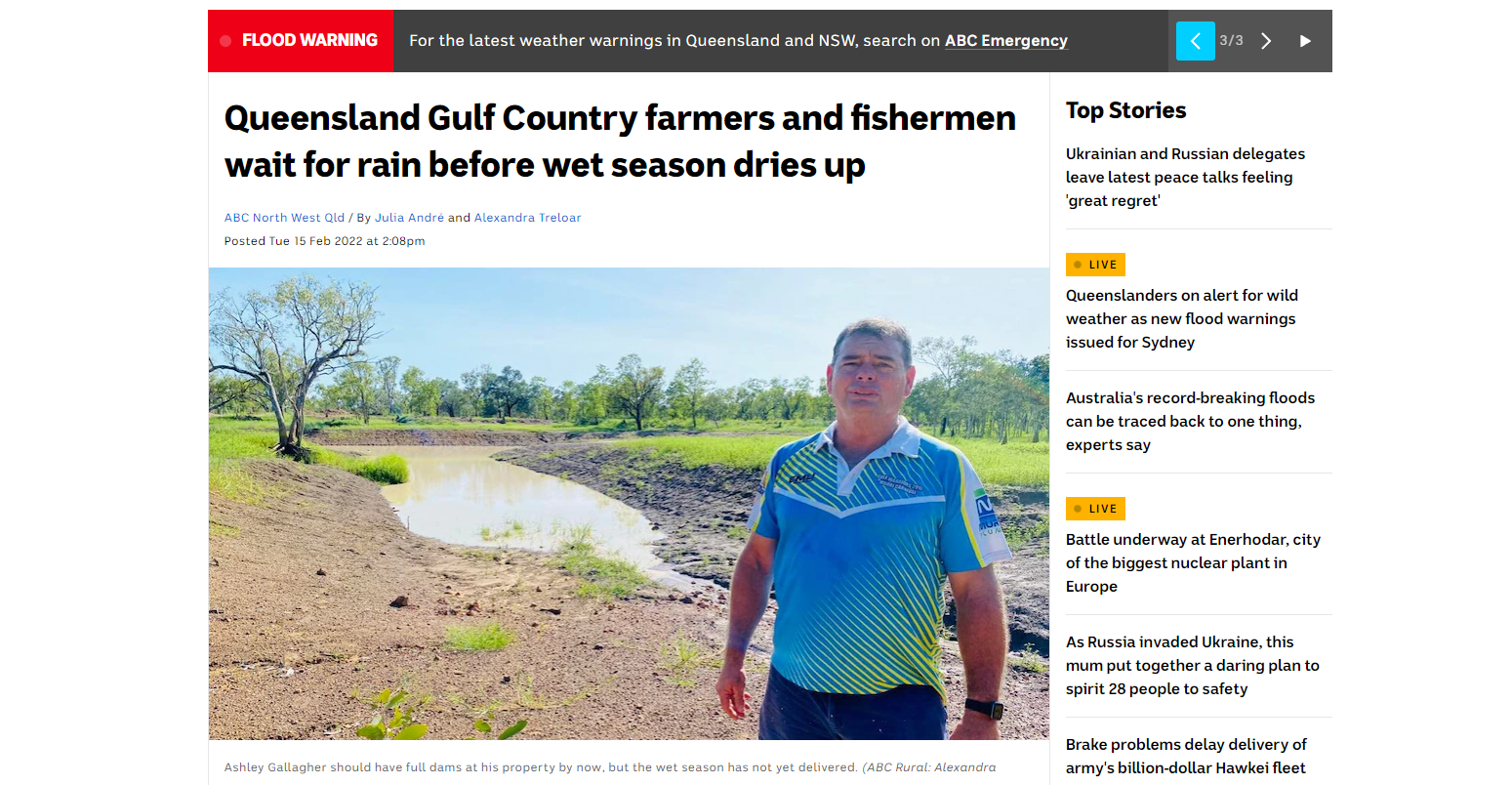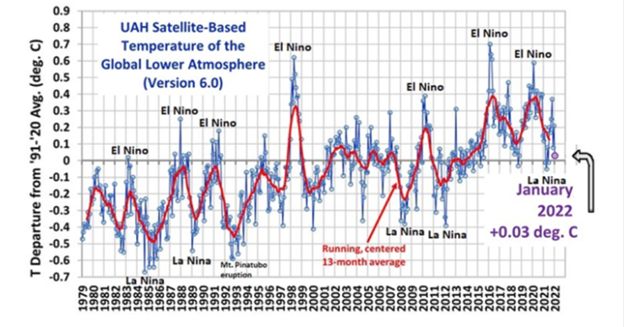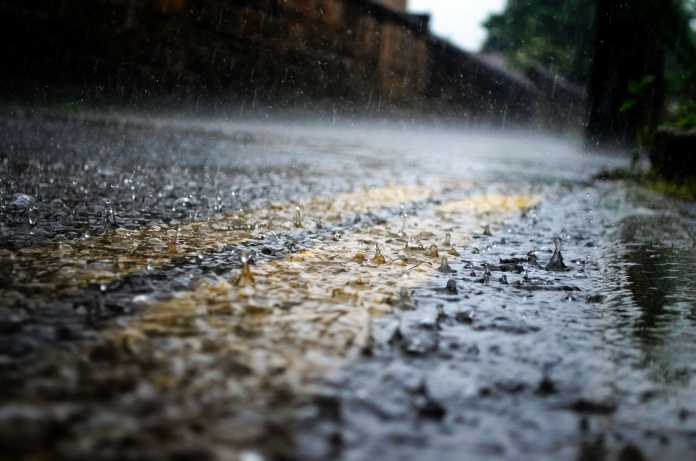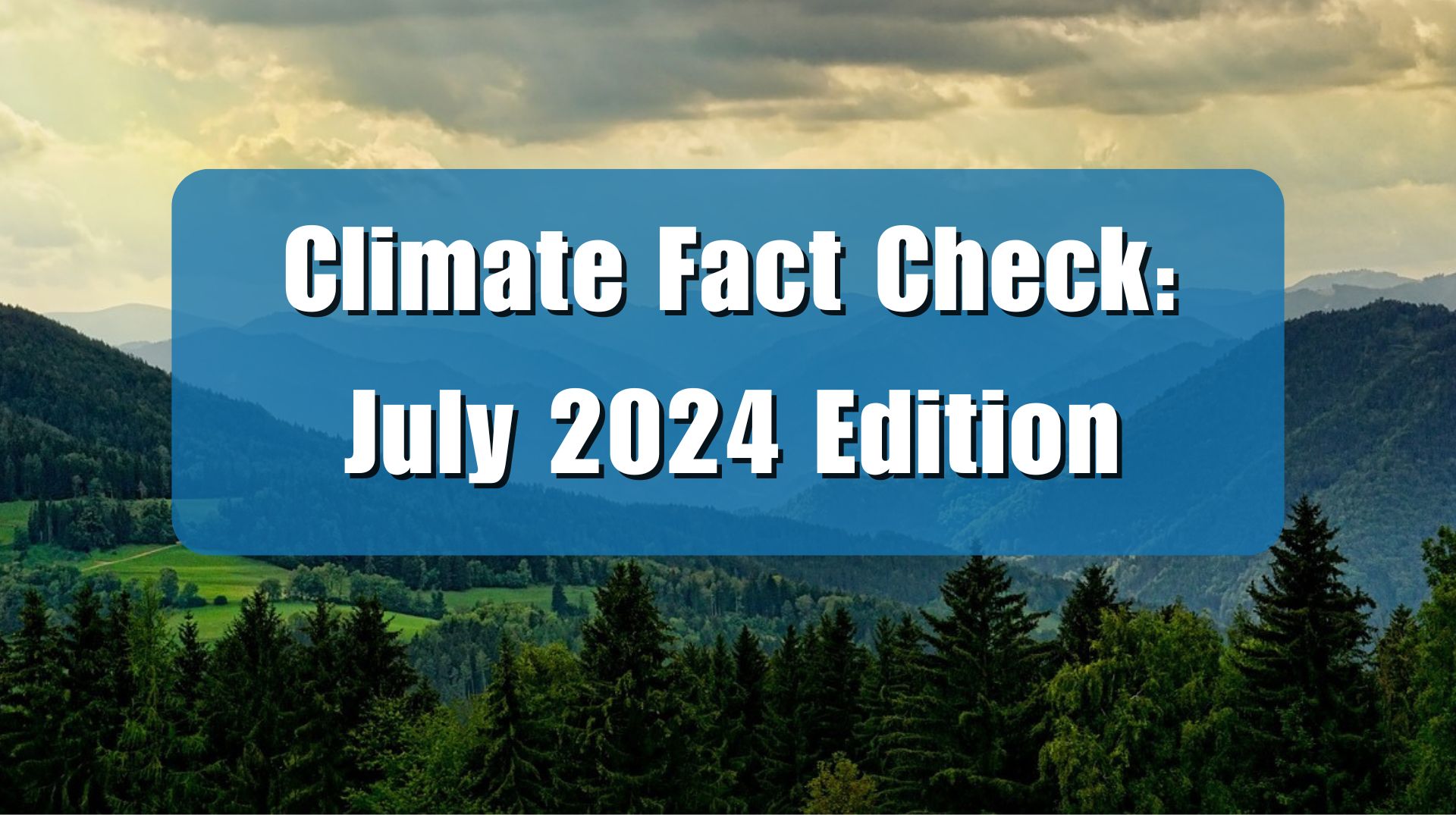A Google news search today for phrase “climate change” turned up a Los Angeles Times (LAT) article, titled “California drought, Australia floods: Two sides of La Niña amplified by climate change,” claiming current La Niña conditions in the Pacific are stronger than normal because of anthropogenic climate change. The LAT presents no evidence this is true and plenty of data and peer reviewed research indicates it is false. Data also show, contrary to LAT’s assertion, neither drought nor floods are worsening in either region.
Writer Paul Duginski claims recent La Niña-caused weather events, like increased flooding in Australia and drought in California, are being made more extreme by global warming.
“All of these are related as a multiyear La Niña event, amplified by the effects of climate change, brings consecutive years of drought to some parts of the world and torrential rain to others,” Duginski said. “These are natural climate variations, but recent droughts, floods and heat waves suggest something has changed.”
Duginski’s description of the El Niño and La Niña cycles is about the only accurate part of his story. He describes how, during La Niña the east-to-west trade winds over the Pacific are enhanced, leading to a decrease in precipitation in California and more rain for Australian on the other side of the Pacific.
Where Duginisky goes off the rails is with uncorroborated assertion that the effects of these cycles are getting more extreme due to global warming. Data simply does not support his claim.
Looking first at the history of flooding in Australia, it is clear from the data that, while this year’s flooding event did break a record for the most rain in a single day in Brisbane, Australia modern record, having a very wet year is not unprecedented. There is no meaningful trend in annual rainfall data for eastern Australia.
Only weeks prior to the recent floods, Queensland, Australia was on track for lower-than-average rainfall, as reported by ABC Australia, shown in the capture below.

Nor is there any evidence climate change is causing more extreme events in Australia generally. A September edition of Climate Change Weekly summarized the findings of three studies published in different journals which looked into “compounding” natural disasters in Australia, meaning multiple disasters striking Australia simultaneously. The studies found no trend at all for the last 50 years in compound disasters.
Because La Niña and El Niño cycles often span multiple consecutive years, the current El Niño impacted the Pacific during the winter of 2020-2021. The staying-power of this cycle is not unusual either, as shown in this recent analysis by Meteorologist Paul Dorian, “La Nina Conditions Continue Across the Equatorial Pacific.”

Across the Pacific in California, it is suffer from an extended drought that alarmists incorrectly claim is the worst in centuries. As discussed in Climate Realism articles here, here, and here, for example, drought is a natural recurring event in the Western United States. Environmental Protection Agency (EPA) data shows no trend towards more frequent, extended, or severe droughts. To the contrary, all data points to more precipitation, not less, as shown by data from the National Oceanic and Atmospheric Administration (NOAA) presented in Climate at A Glance: Drought.
No evidence supports the LAT’s claim that La Niña is becoming more intense, or enhancing the harmful impact it is having on Australia and California. Instead, what this story really reveals is one journalist’s obsessive effort to blame every negative weather event on human caused climate change.

















I’ve always enjoyed these columns about the mass media climate change BS. I thought they were written by H. Sterling Burnett, Ph.D. … and then today I noticed a photo of an attractive lady, and realized that’s not Mr. Burnett. Unless he’s in drag. Not that there’s anything wrong with that.
I found out this column, and some other recent columns, were written by Linnea Lueken. And the columns are just as good as ever. So I say to Ms. Lueken: Keep up the good work !
I’ll be reading every column, as usual. I know this column follows a formula, but it’s a great formula!
I forgot
The February UAH chart was available a few days ago.
“Data” are plural, for the next column.
RG
Nitpickers of America
Michigan Division